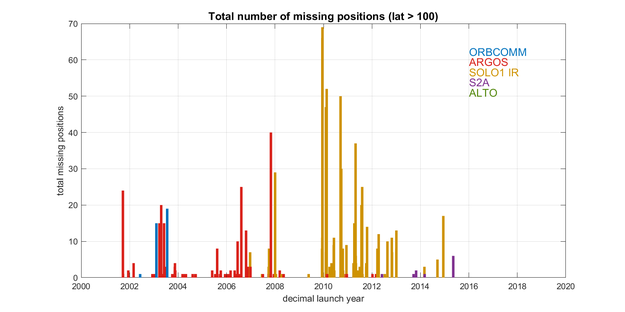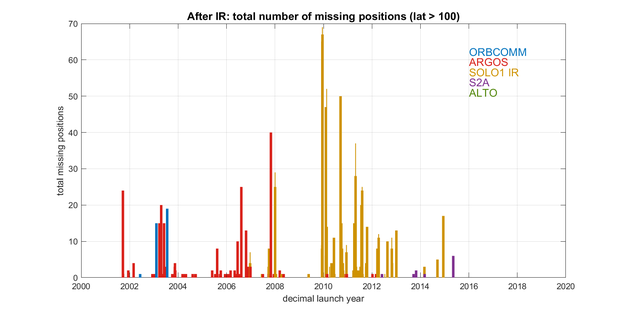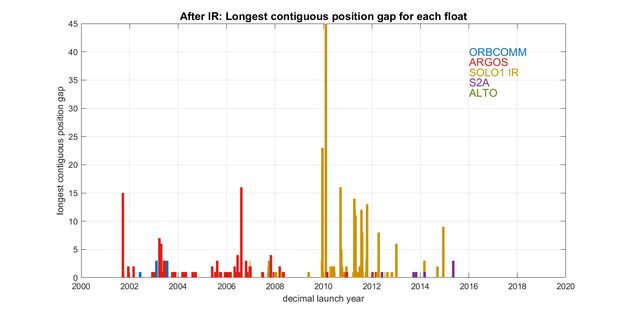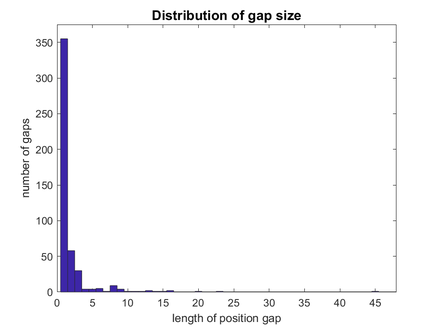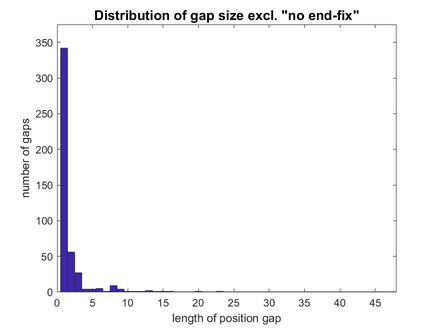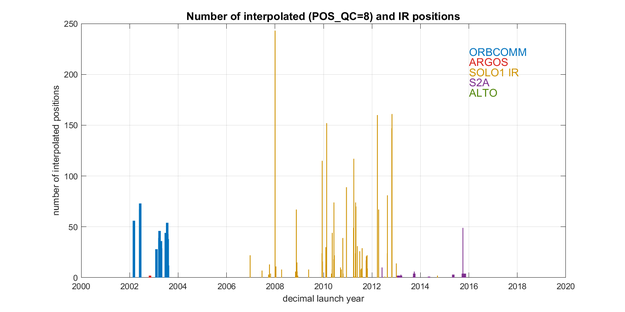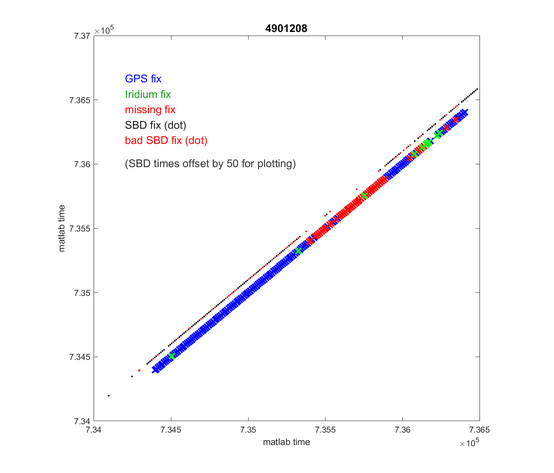|
2) Can we squeeze more out of SOLO2 Iridium? (Yes.)
The SOLO2 real-time processing already considers using IR positions if GPS
is unavailable. However, it seemed worthwhile to check the few S2A gaps
against available IR fixes. This identified six floats with a total of
12 missing positions. Of those, five could be filled by available IR/GPS data
from the files in /data1/solo2/data/surf/[WHOI #].sfc files. These files typically
list two GPS and one IR fix per profile:
G 11 2 1 2013/11/10 04:04 +25.25431 -91.58239 190 5 30 35 43 1.2
G 11 1 1 2013/11/10 04:22 +25.25389 -91.58333 50 5 35 38 44 1.1
I 12 0 2013/11/20 02:48 +25.04630 -91.66490 3.1 13 2.7 0.1
In most of the five successful "rescues", the first GPS fix was "bad" (99999), but
the second one appeared to be fine. In one case, only the Iridium fix was good.
I did some exploring to understand patterns, such as in the 6 QC numbers following
the GPS lat/lon data, but it was not obvious to me. Given the small number
of cases, I decided to not go further (e.g., trying to get QC definitions from
Alex and/or Breck, etc), but instead checked the substitute fix in figures
of lat/lon time series, a map, and with a speed check as for SOLO1 IR
substitutions earlier.
3) Related: positioning QC flag of 4
I do not know the extend to which our routines consider the QC flag of
profile positions, but it would seem that an existing position marked as
bad (4) may have the same result as a missing position.
QC=4 was found for 115 profiles from 100 floats - most floats had only one
occurance. Starting with late ARGOS floats launched by Nov 2007 and
continuing for SOLO1 IR and SOLO2, it was basically only cycle 0 was marked.
In all but one instance, lat/lon time series and speed checks determined to
"re-activate" the fix by setting QC=1.
4) Missing first position:
Interpolation also does not work if the gap starts with the first profile.
Pelle's meta_sum structure in (/shared/argo/metadata/meta_sum.mat includes a
launch position and date that could be substituted in these cases. Its on the
list to fix 12 floats with this concern. All of them have a launch position
in meta_sum.mat, with 7 having launch- and missing profile time within a day.
For 5 others, its 10 days (4 floats) or 4 days (1 float) .
5) Interpolation - over what gap size?
The previous plots included position gaps of up to 45 profiles. At what point
is a gap too large to interpolate over?
First: how many large gaps are there? Below is th distribution of gap sizes,
dominated by single-fix gaps. A zoom-in on the right shows the number of larger
gaps.
|

